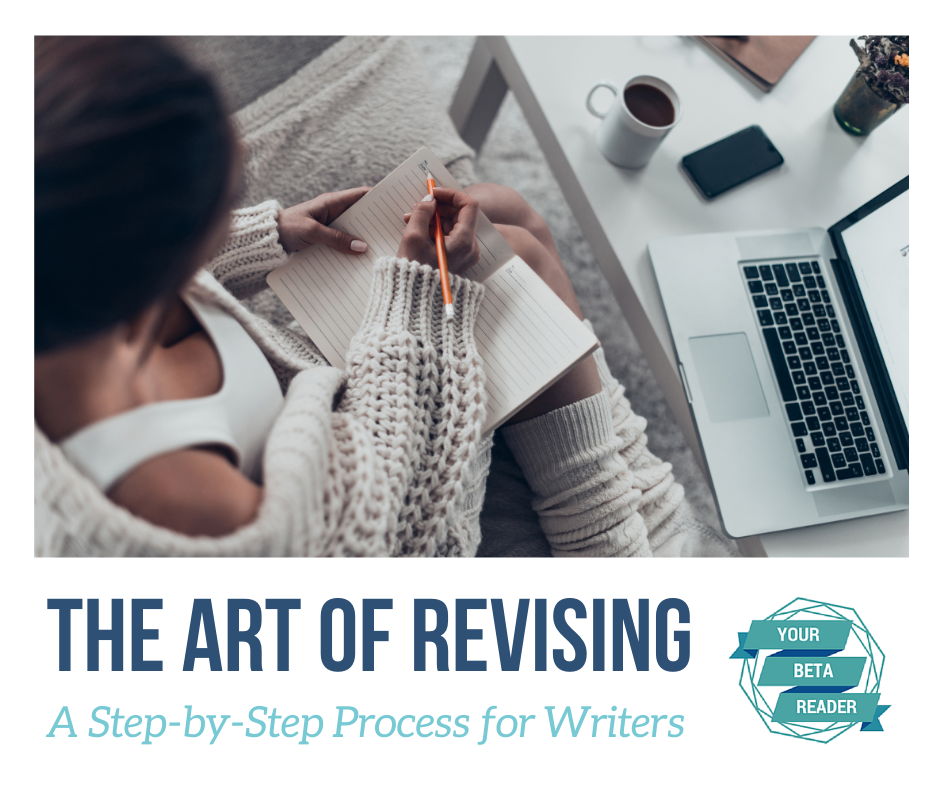
“A writer’s life is a life of revisions.” – Jonathan Franzen
Right now it’s a Saturday morning and the entire house is still sleeping. It’s grey and gloomy outside and we’re expecting a good bit of rain. I prefer days like this when it comes to working on writing and projects because I find the ‘gloom’ helps me concentrate. And, with today being a writing work day, I need to concentrate because I’m jumping into the revision stage of the process.
I can almost hear the groans from other writers. Yes, we work so hard to get the first draft from our minds to paper. Sometimes we’ve struggled for every chapter, every word of those drafts and we can’t imagine how we are going to make it better when so much of it was like getting blood from a turnip. It’s part of the process, though, and we cannot avoid it. Necessary evil, I guess.
I’ve spent so much time trying to hone my revision process that I finally have it set up so that the task is less daunting. Less evil. Less likely to make me want to pull my hair out, cry in the corner, and quit writing completely. Progress is important, my friends.
But, let’s clear up one GIANT misconception first. Revising IS NOT Editing. Did you hear me? They’re different. They take different skills, different approaches, and give different results.
Editing is what I consider to be the mechanical side of things: the grammar, punctuation, format, spelling. It’s more stylistic. It’s something I do at the end of the process and I hire others to do this for me because it’s not my strong suit.
Revising is something that is constantly happening draft after draft after draft. This is when a writer needs to switch their brain and focus to being a reader. Yes, you still need to be a writer to make the changes necessary to turn a first draft into something better, but it’s also where you need to look at those words and how they tell a story from the perspective of a reader. Only when we try to look at things from a reader’s perspective can we see how a novel or story or poem will pull others in, keep them engaged and invested in the work.
I have a process I use to revise – steps I take to make the whole thing less awful and more enjoyable. It’s important to note that none of this information is new. I didn’t invent any of it. I’ve spent years scouring the internet and reading craft books that all shout about the perfect way to revise. My process pulls from all of it. It works for me because I’ve tweaked it to work for me.
That’s the trick. Find a process that might work for you, break it down to its most basic points, and tweak it so it’s a better fit for your writing style. By showing you my process I’m hoping you’ll be able to do just that! You’ll be able to make it work for you. Save yourself the hours and hours of scouring the Internet for the ‘right’ way to revise and simply start here. The rest is up to you.
So, without further ado (and rambling because I have my own revision to tackle) here is my revision process:
Step Zero – Let your novel sit.
Ideally, you’ve taken a break from your novel for a period of time before you dive into revisions. A week. A month. A couple months. Whatever time period works for you, it’s important to take a break from your writing so you can dive into revisions with fresh eyes. The novel I’m revising sat for two months. We needed that break from each other.
Step One – Print out a copy of your first draft.
Look at it. Celebrate it. Appreciate holding a tangible thing in your hands after all the work you’ve done. Use this printed copy to jot down notes of changes, things to rework, and parts that need to be cut. You can always use track changes on the computer for this, but I find it easier to do it on the printed copy. It stays more organized and that works better for me.
Step Two – Create a Novel Map.
Go section by section, chapter by chapter, and write down what happens in order. This isn’t meant to be extremely detailed. It’s meant to take hundreds of pages and narrow the important things down to a page or two. This also allows you to see the basic plot structure and events of your story (and we’ll be working through those later!)
Step Three – Break Revisions down into categories.
I revise my novels 5 times before they ever see other eyes. Yes, five times. It’s not a daunting as it sounds when it’s broken down into categories. If I read through my novel over and over again and tried to fix everything at once I’d be lost, things would be missed, and I’d be so sick of the thing that I’d likely give up. So I revise by categories:
- Plot Revisions – I go through my entire draft focusing only on the plot details. This is where the novel map really helps. I have all the basic events written out which make it easy to see where in the timeline things happen, what I want to add, and what events I want to change and take away. This is a longer step in the process, but once you’ve finished plot revisions you’ll almost feel like you have a whole new story. So take it chapter by chapter and just fix and rework your plot until you’re happy.
- Character Revisions – Once my plot is in better shape I’ll dive into character revisions. This is where I focus solely on these people I’ve created. Are they consistent? Are they staying true to their motivations? Do they grow and change throughout the story in the way I wanted? I wouldn’t want to create a character who is known as being strong and brave yet have them whimpering and whining throughout the entire novel. This is my chance to fix those thing, to make sure that the emotional and physical journey they’re on matches the motivations and goals.
- Setting/World Revisions – This is one of the easier revisions for me because I don’t write things like high fantasy where the world is super complex. It’s still important, though, that I make sure my setting fits within the novel. I check my descriptions and how I’ve presented my setting to make sure it fits with my story.
- Dialogue/Prose Revisions – I love this step in the revision process. I consider dialogue to be one of my strong suits so I enjoy going back through and reworking the dialogue to make the story sharper. Sometimes, though, I need to cut a good bit of dialogue and tweak the words so that I’m sure the conversations between characters are actually moving the story along and not just filling space. It helps if you can read the dialogue out loud. Hearing how it sounds can help you revise it to make it better.
- Feedback Revisions – This step will vary for everyone based on who reads your story. Maybe you have a couple critique partners. Maybe you’ve sent your novel to a group of beta readers for feedback. No matter who provides this feedback, it’s important to analyze and understand what they’re saying as readers so that you can incorporate that feedback to make your novel stronger. This can be a hard step because you’re letting your ‘baby’ out into the world. Granted, it’s a small world you’ve chosen, but it’s still scary. It’s important, though, and you need to really listen to the feedback and make choices about how and what you’ll change or rework.
Step Four – Rewrite your Novel Map.
Now that you’ve made heavy changes and your story has gone through multiple drafts, you’ll want to consider rewriting your novel map to include all the plot changes you’ve made. This isn’t a necessary step, but if you plan to send your book out on submission this is the step that will make creating your synopsis so much easier.
And that’s it! Easier said than done, right!? Yes, this is a huge chunk of work. Yes, it takes time. You can’t rush this part of the process if you want it to work. But, if you break it into categories and tackle one thing at a time, you’ll find the whole process less daunting. Happy revising, my friends! Let’s get to work!

